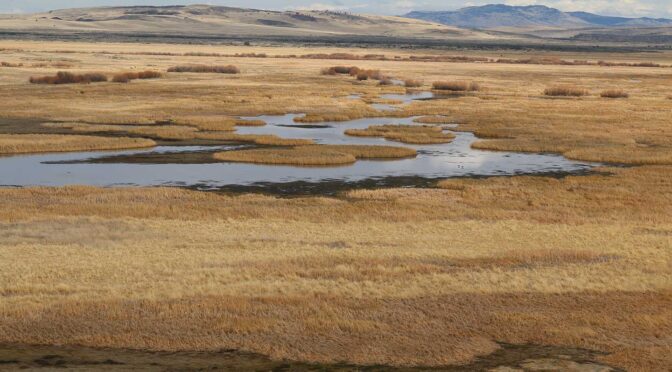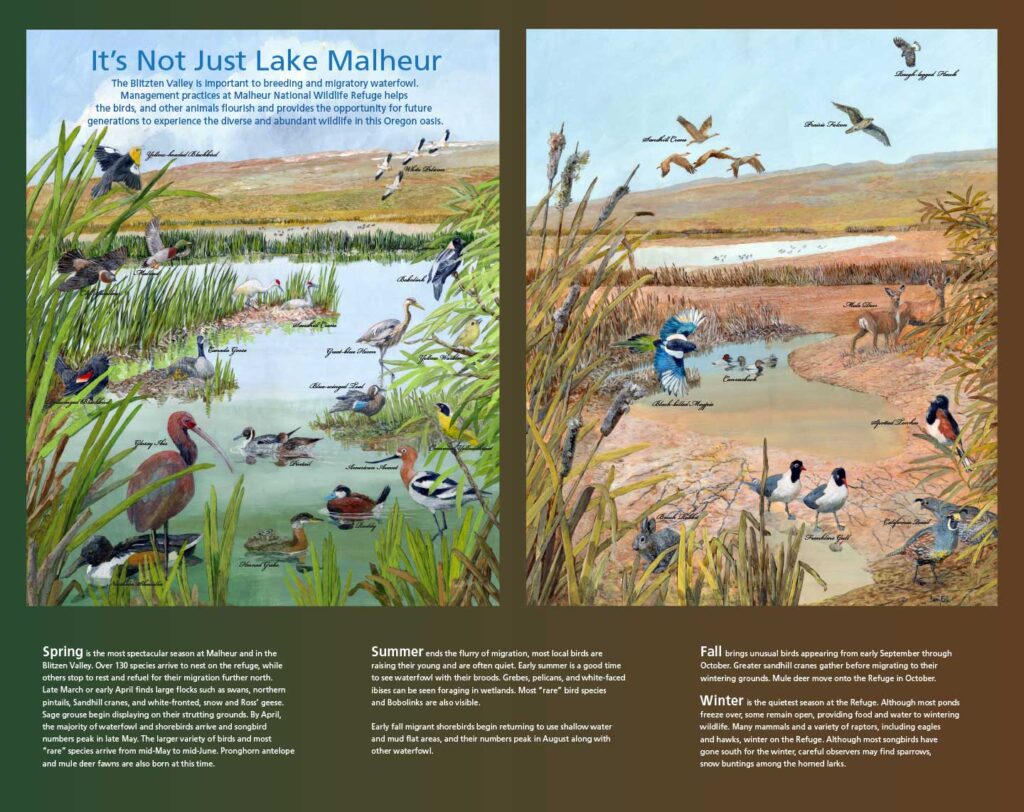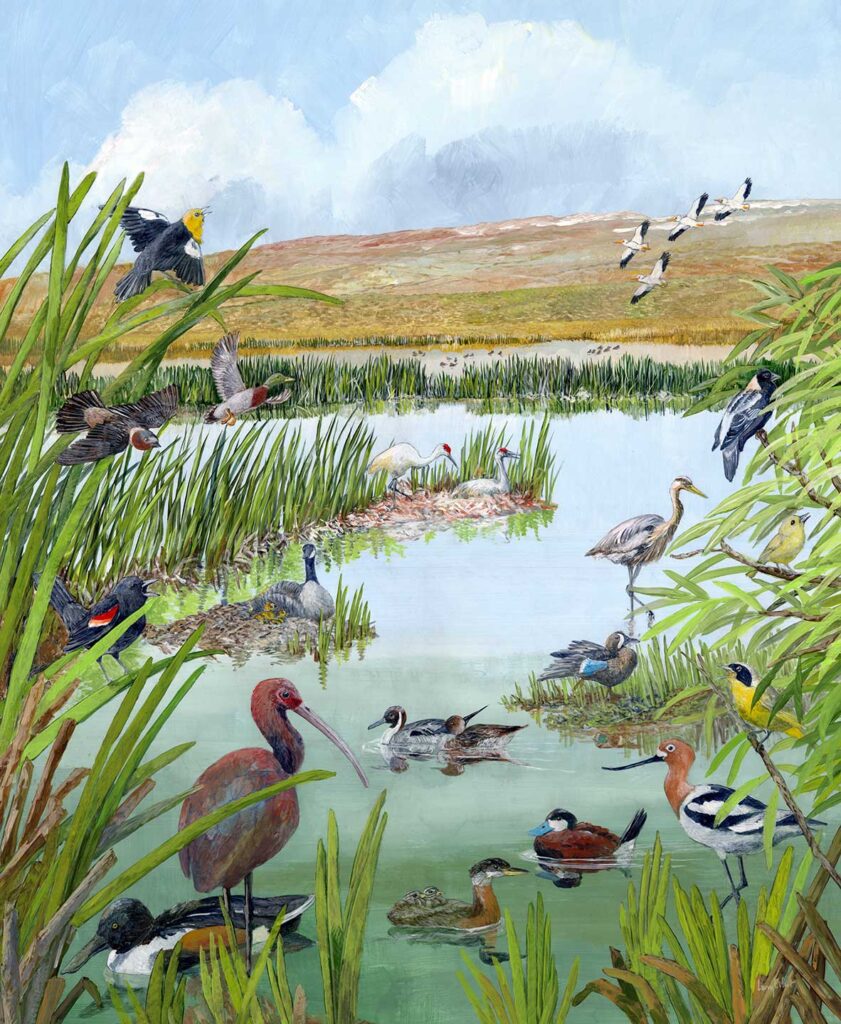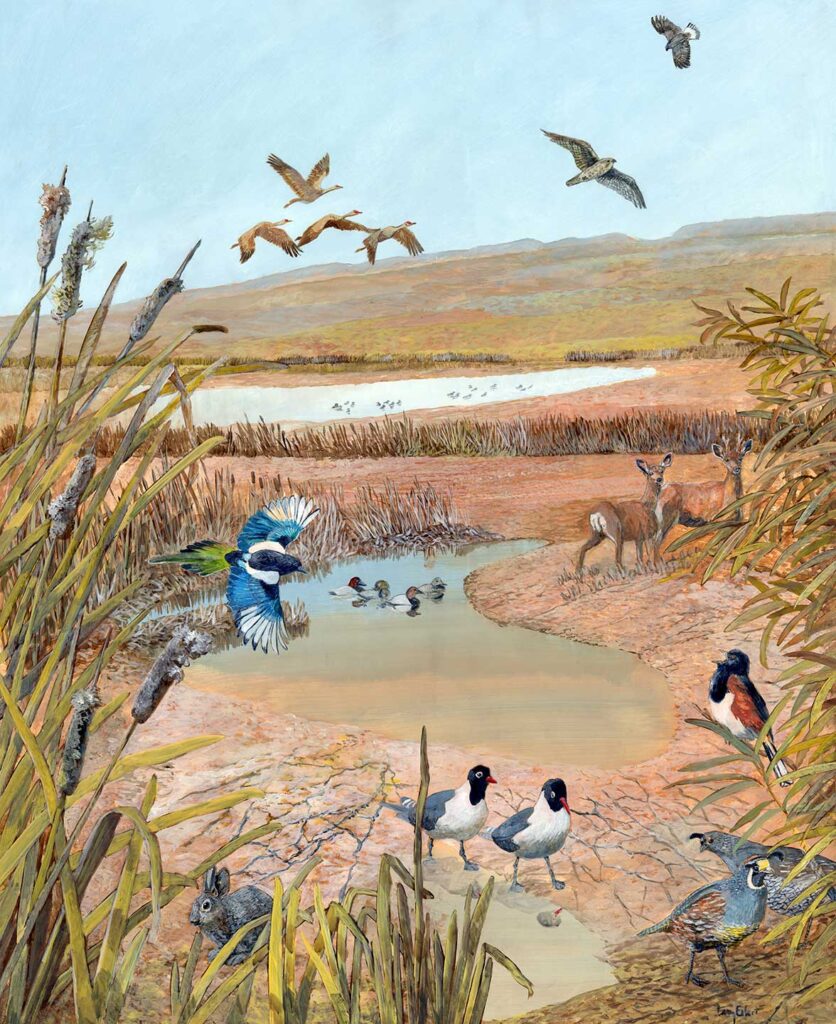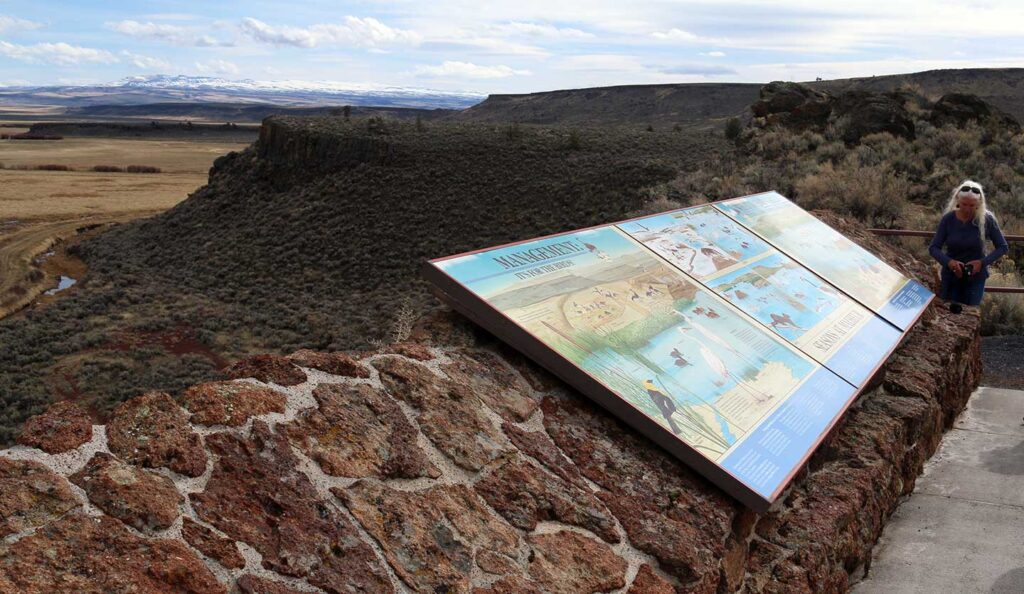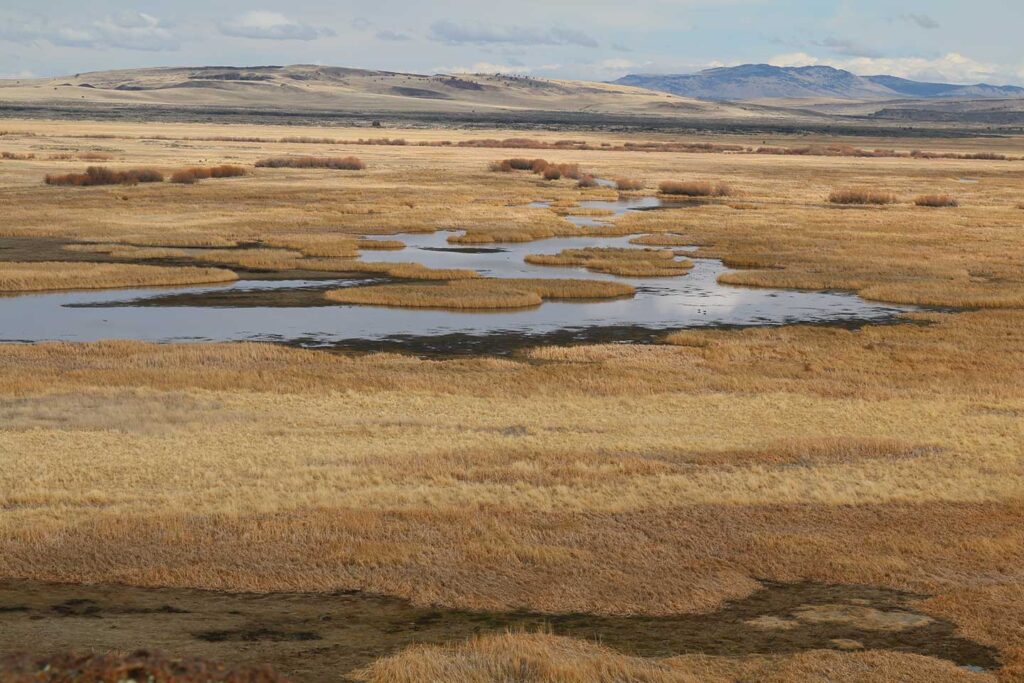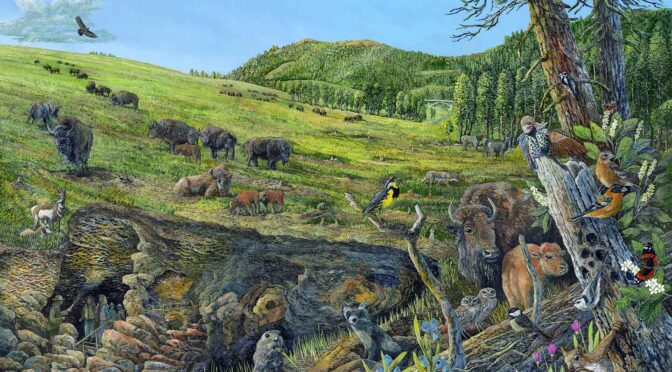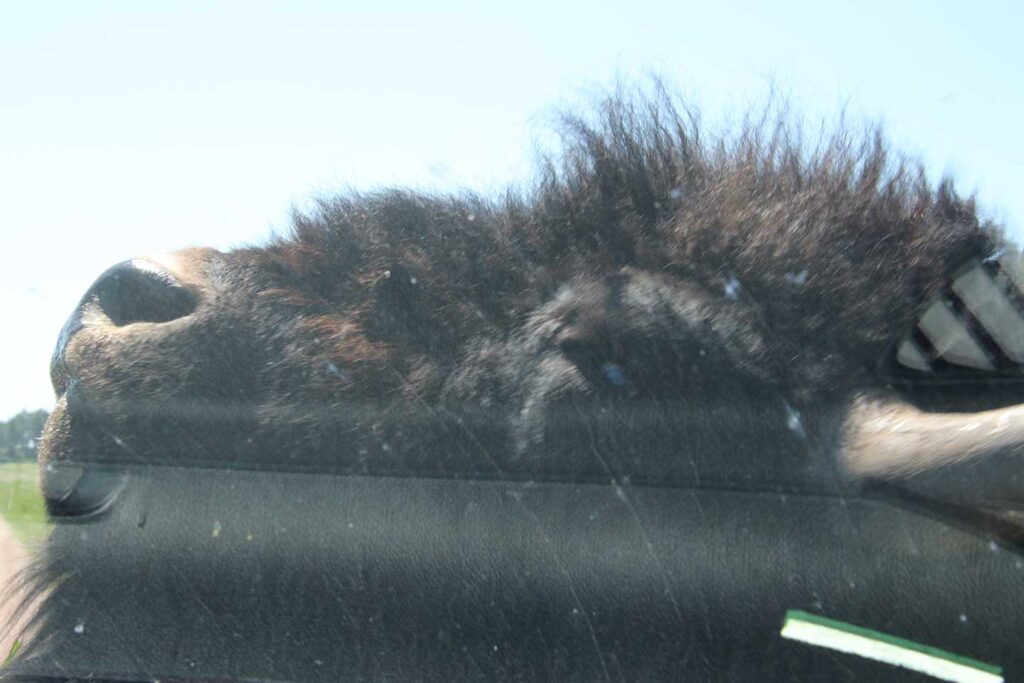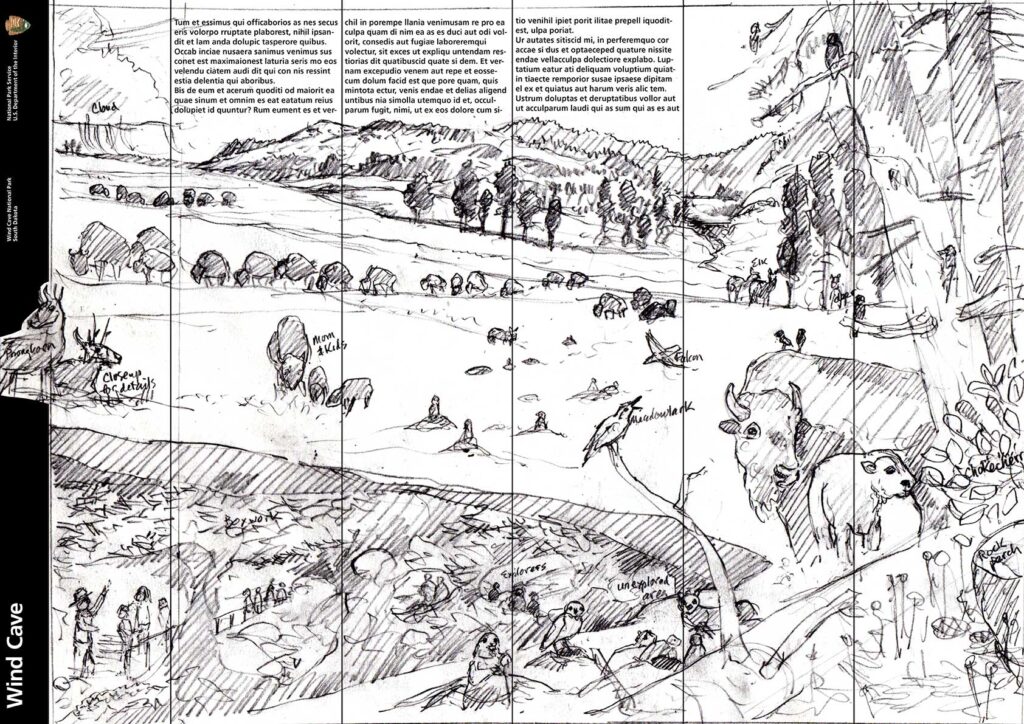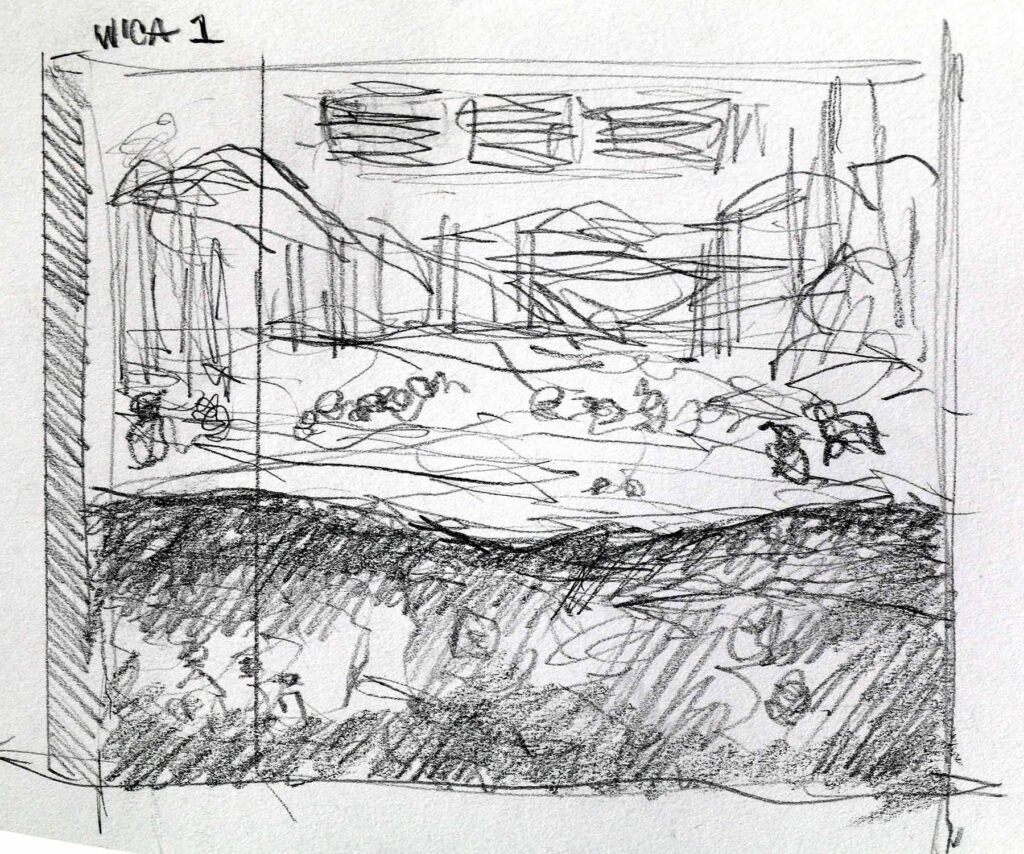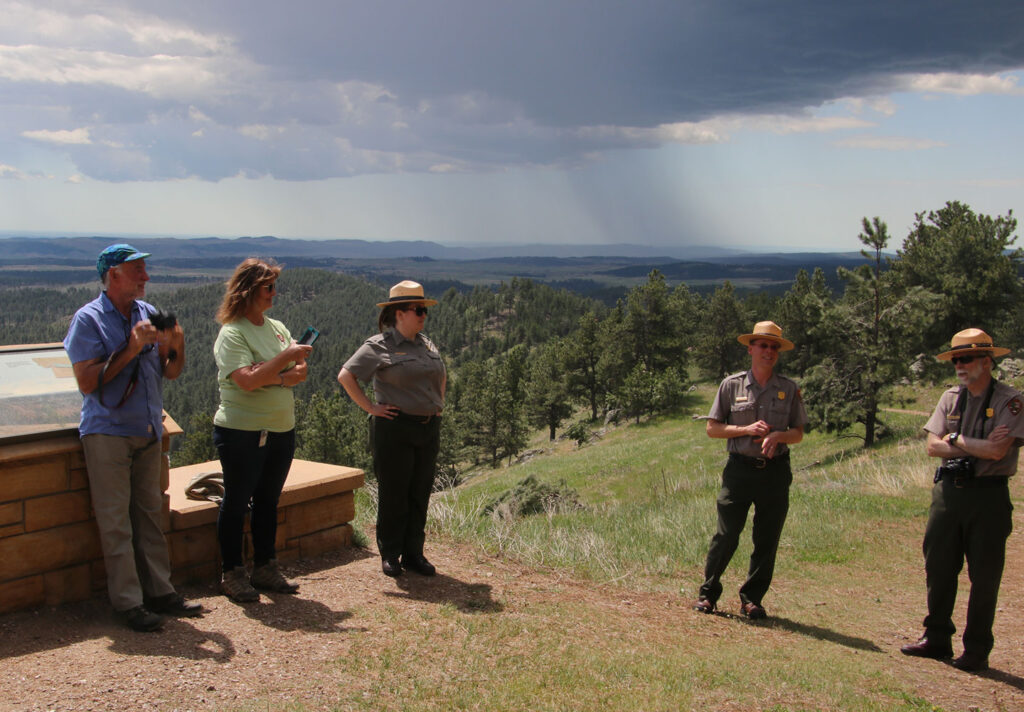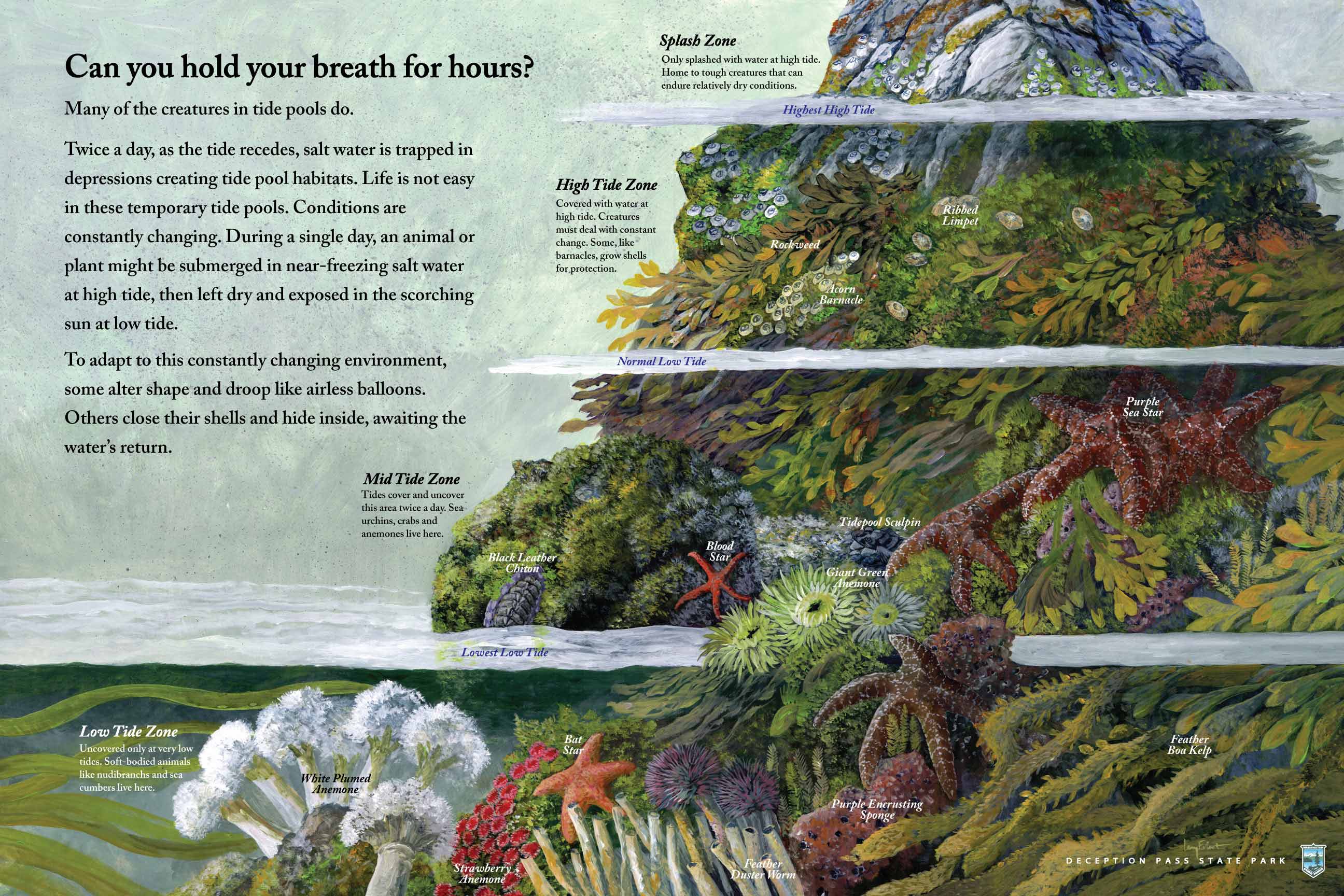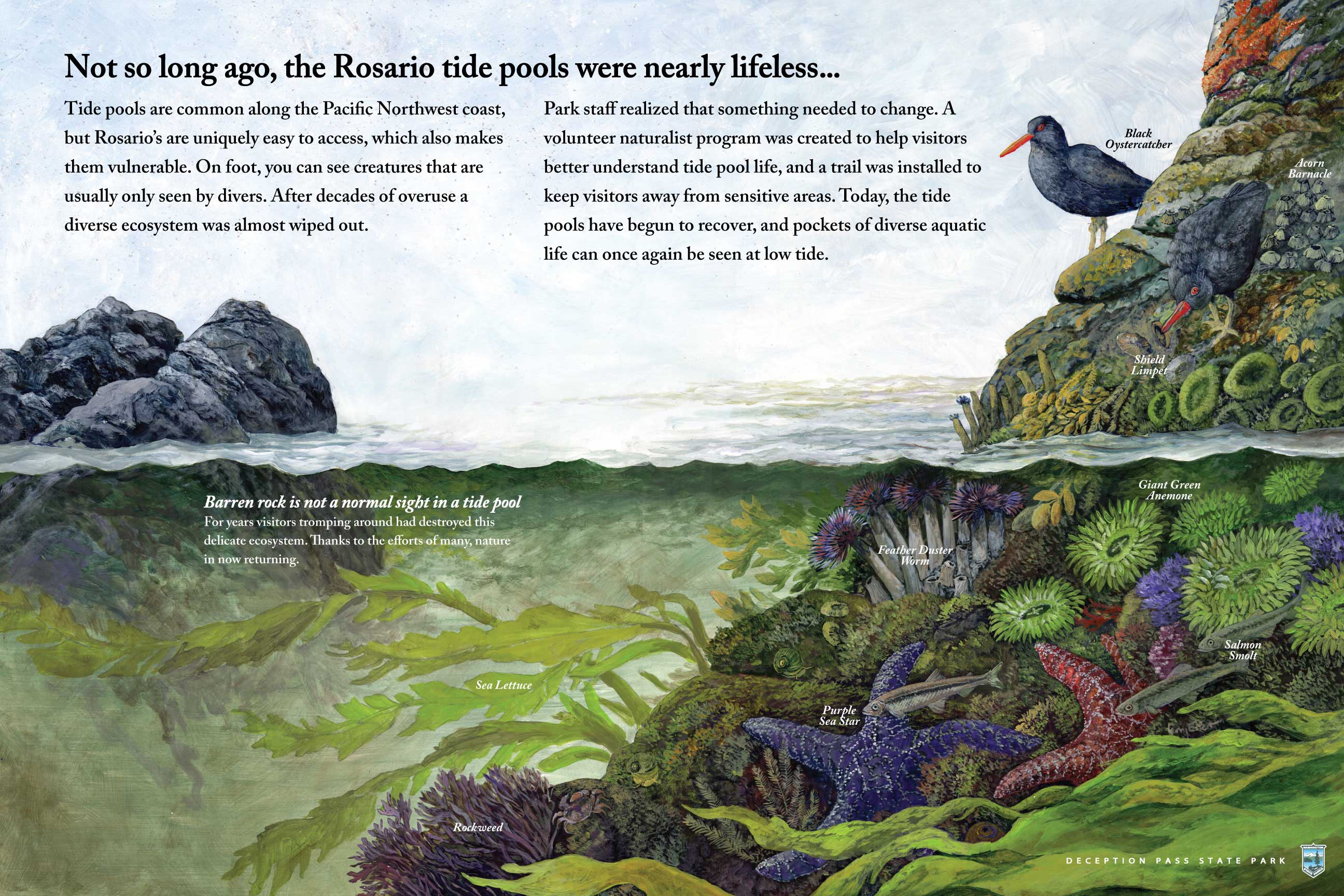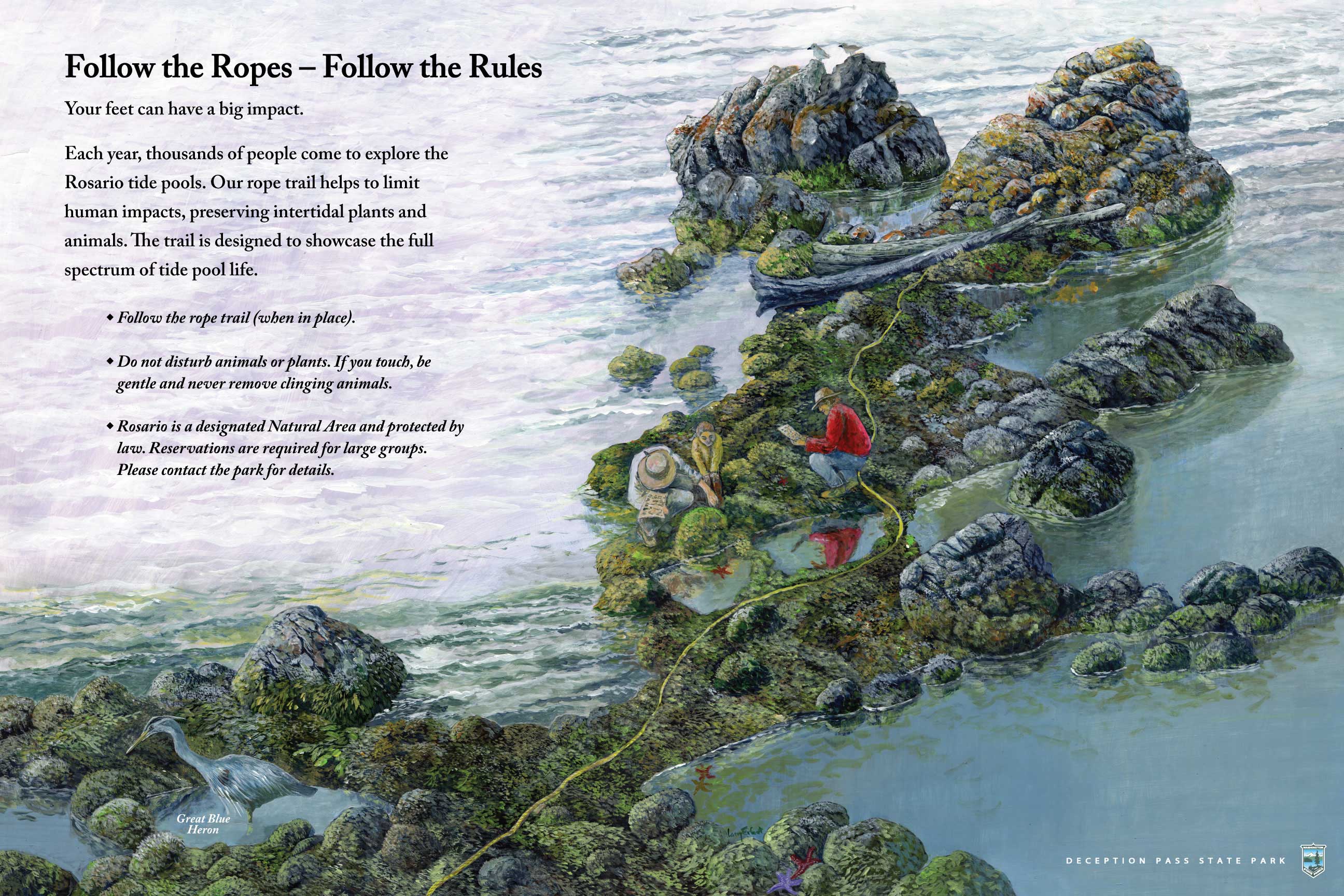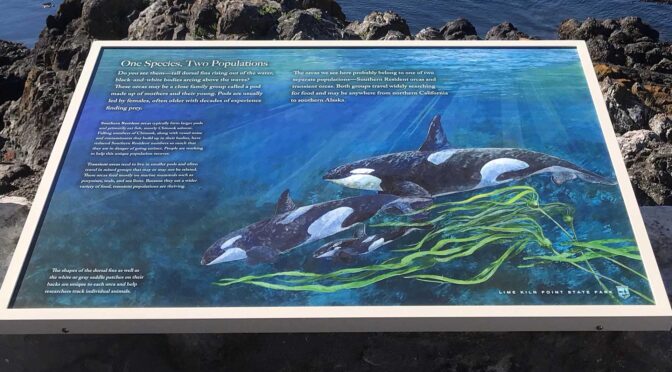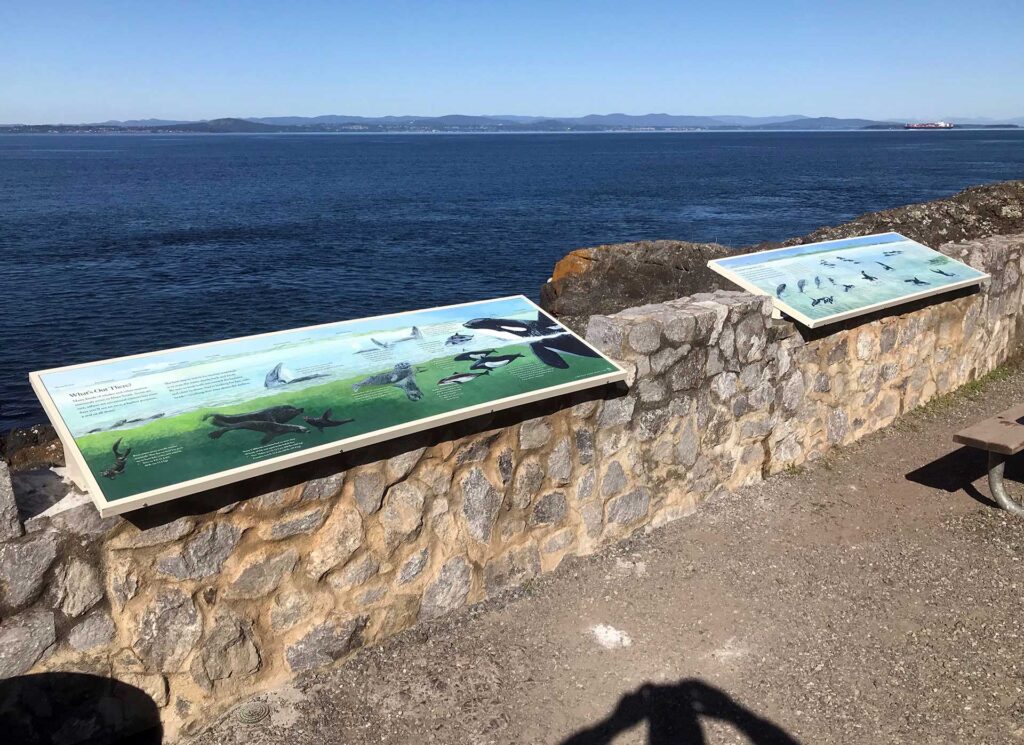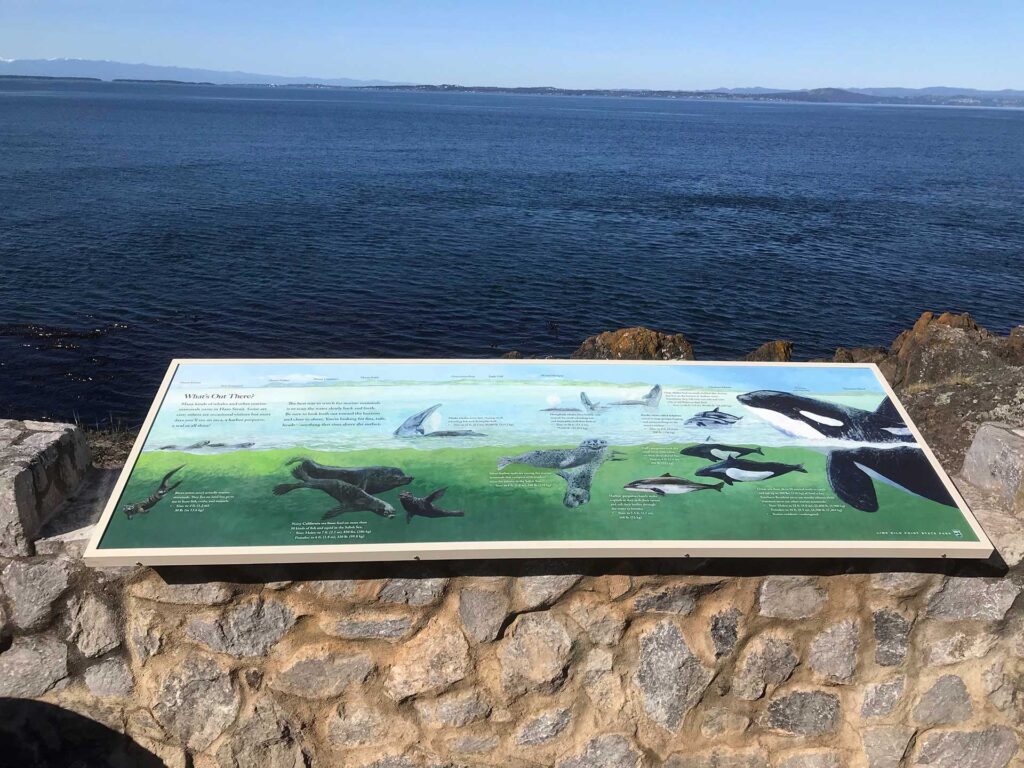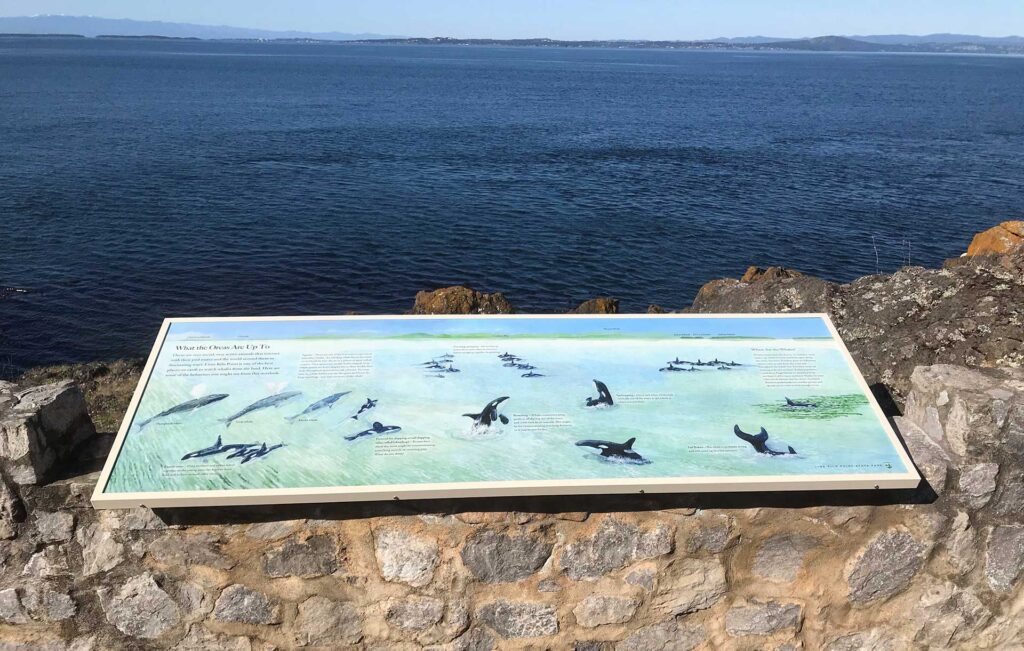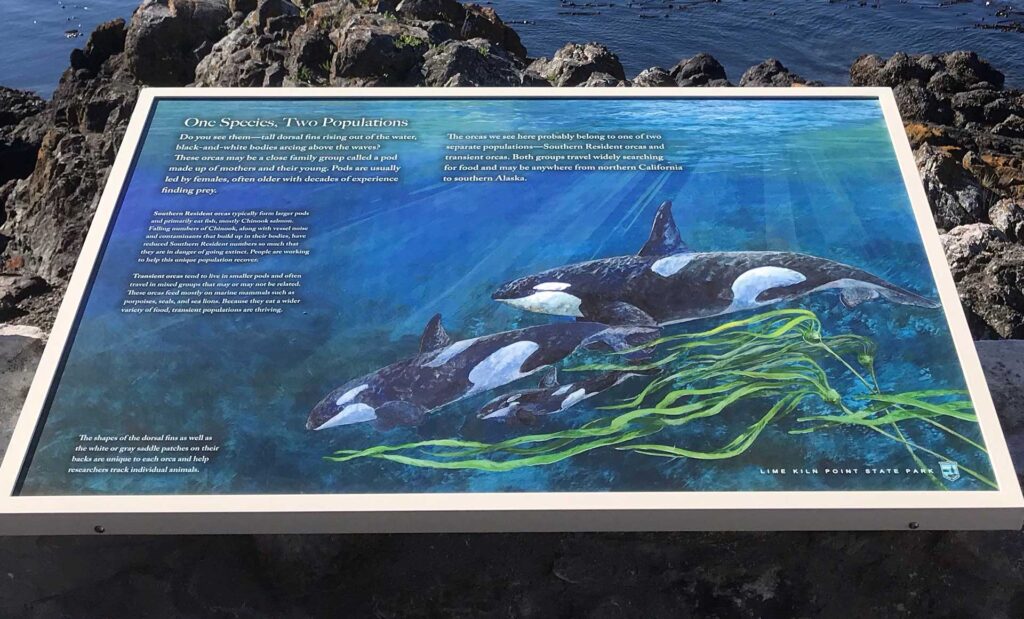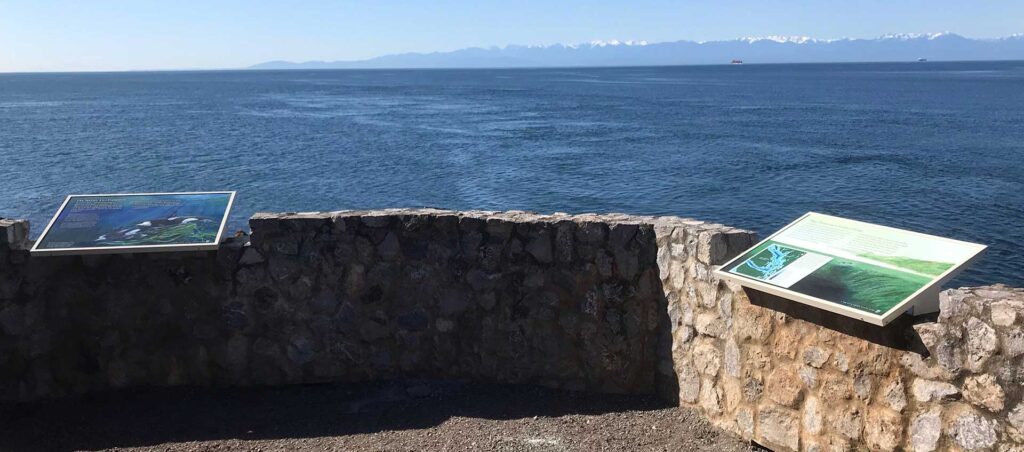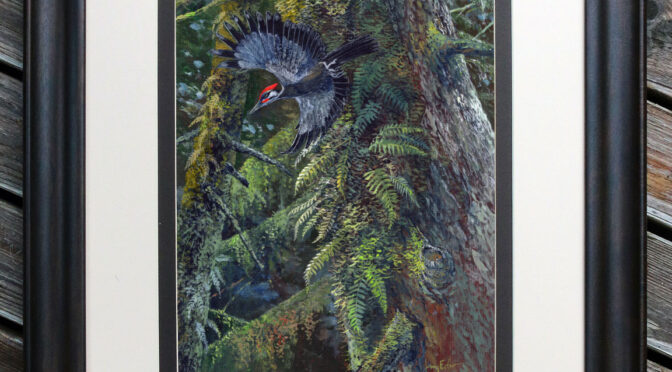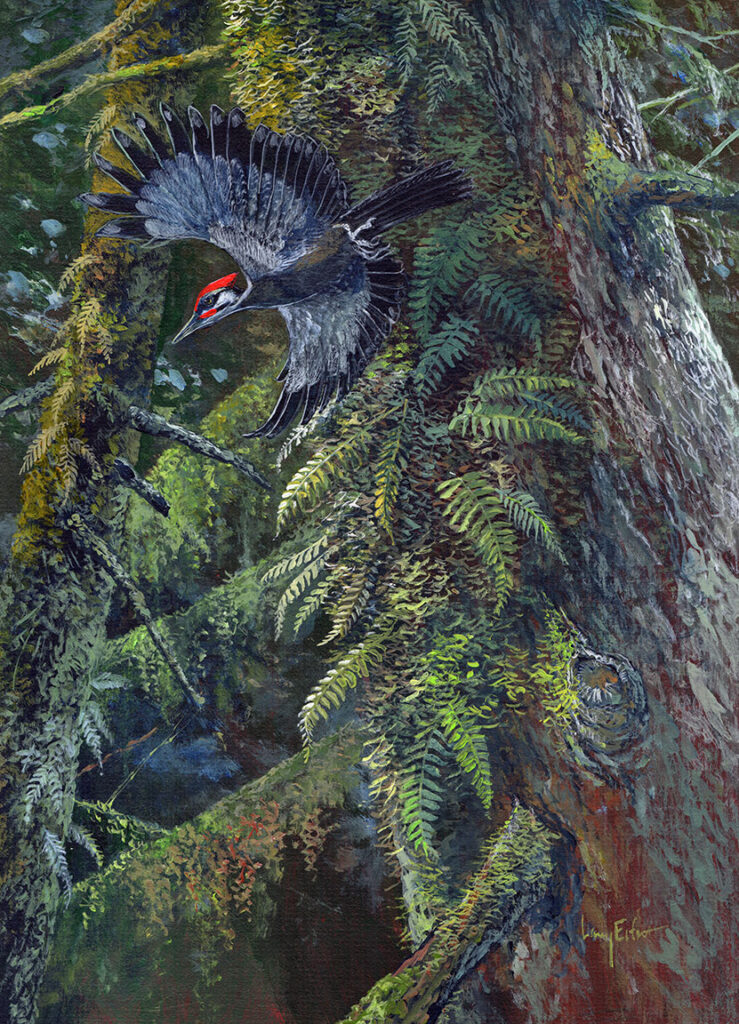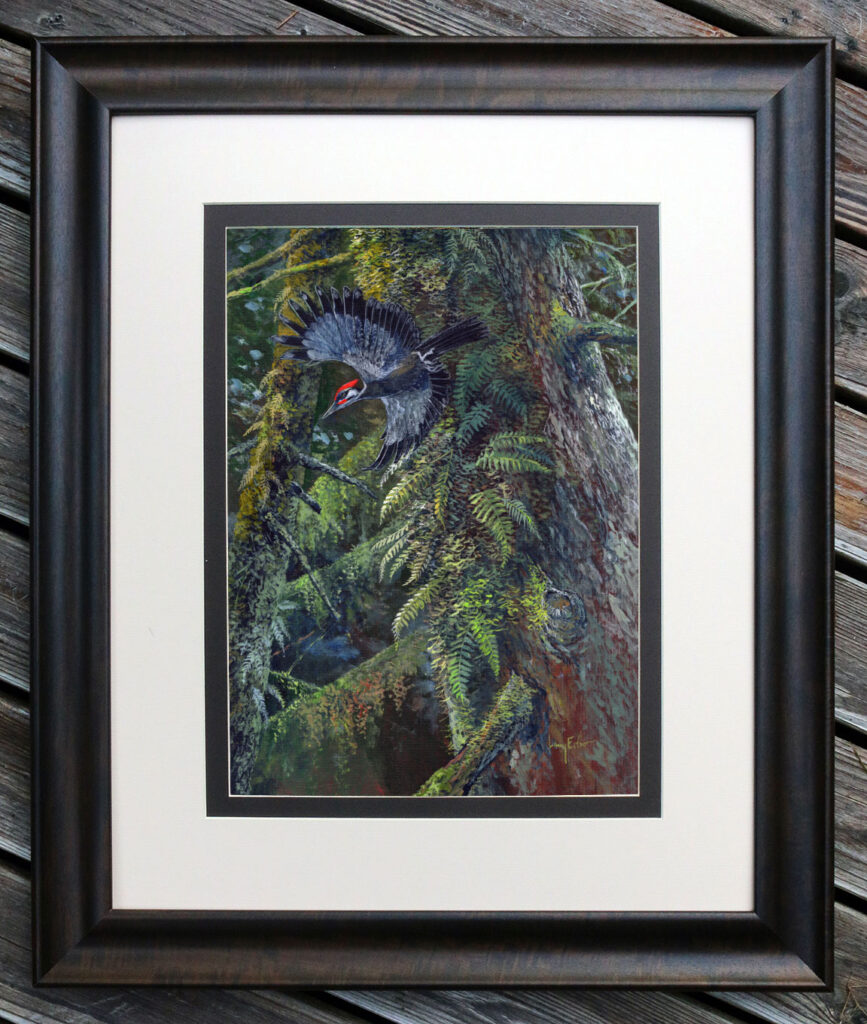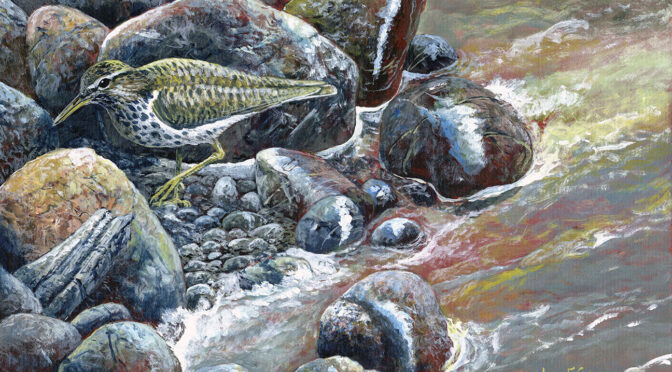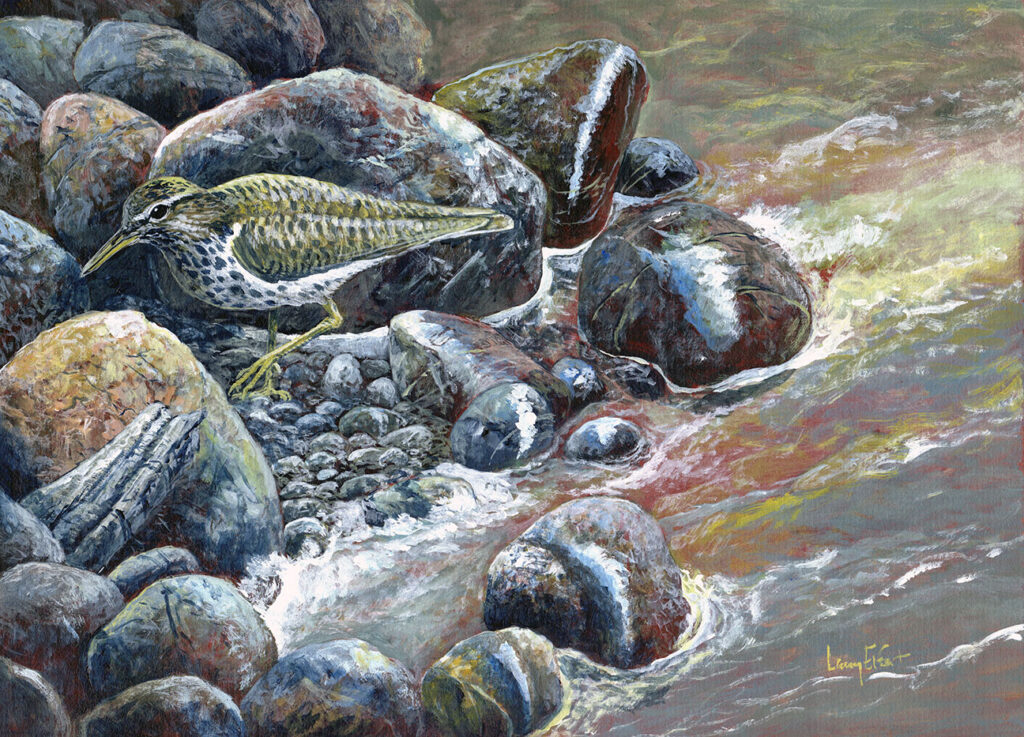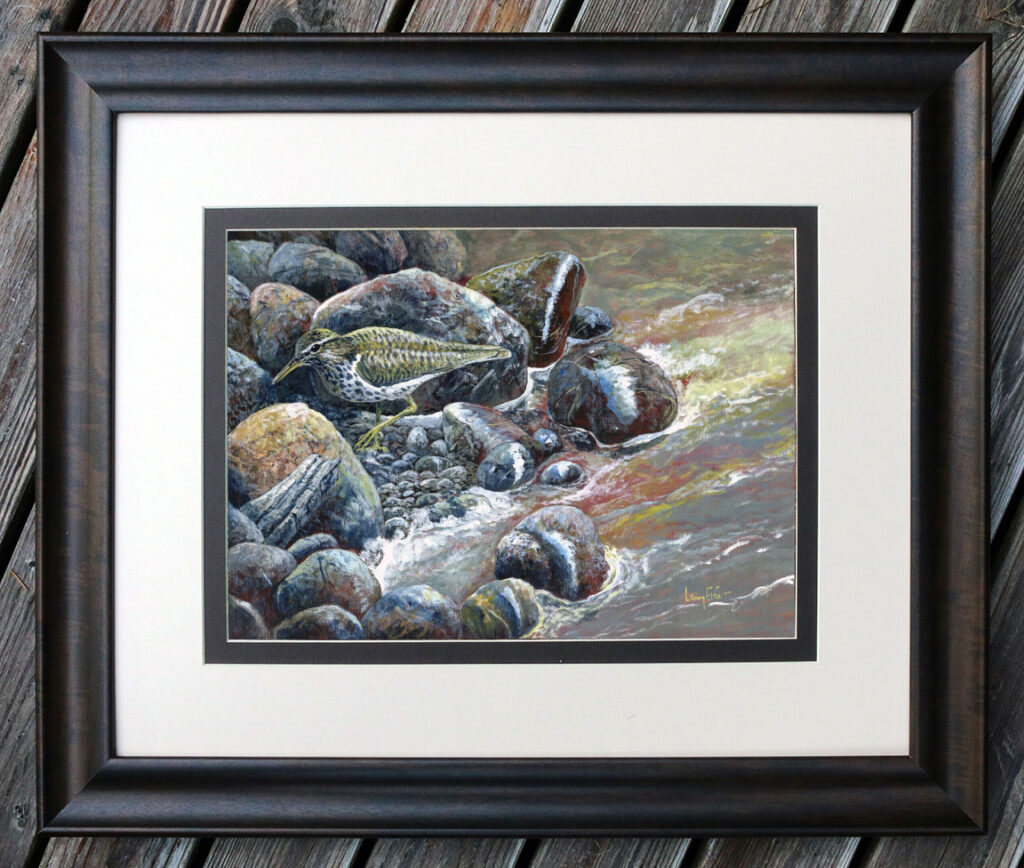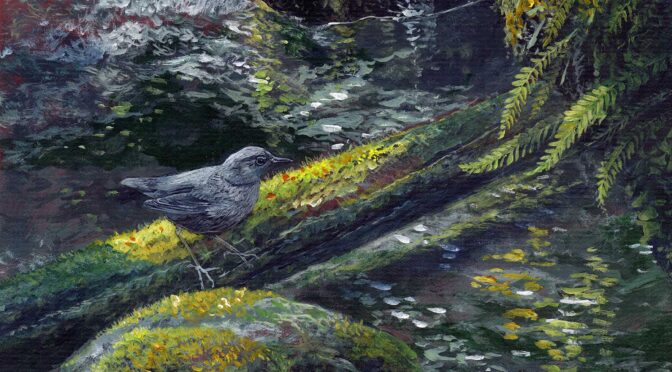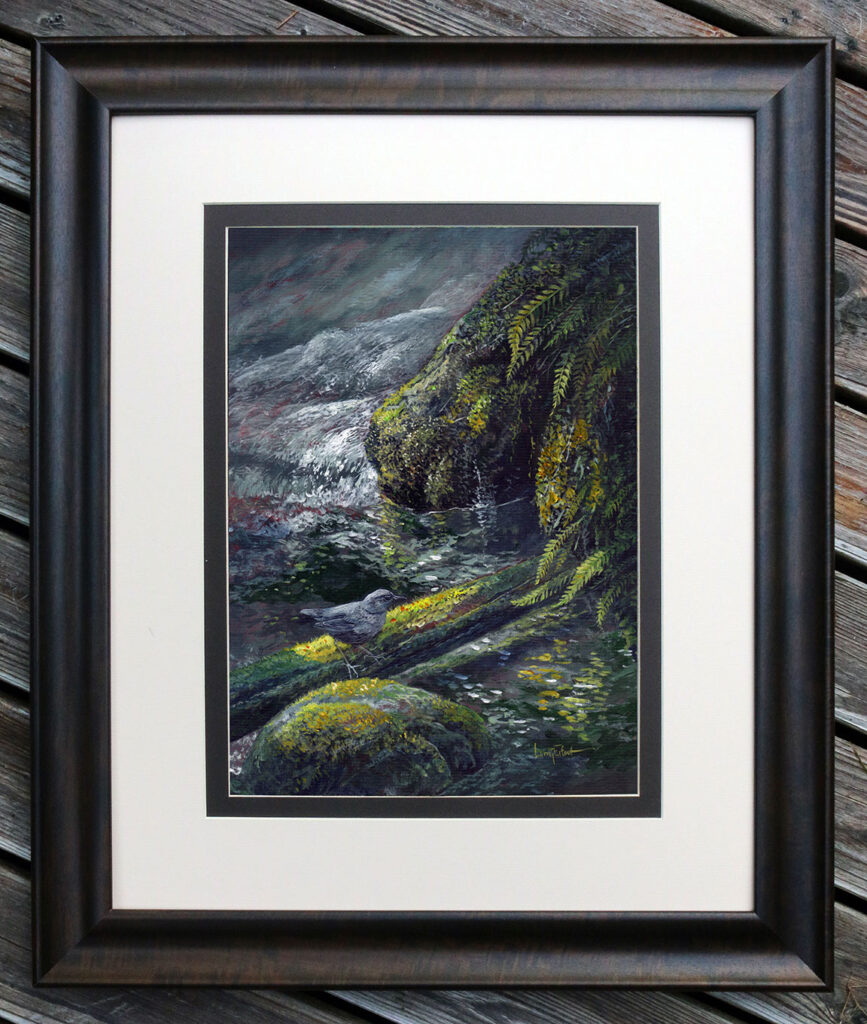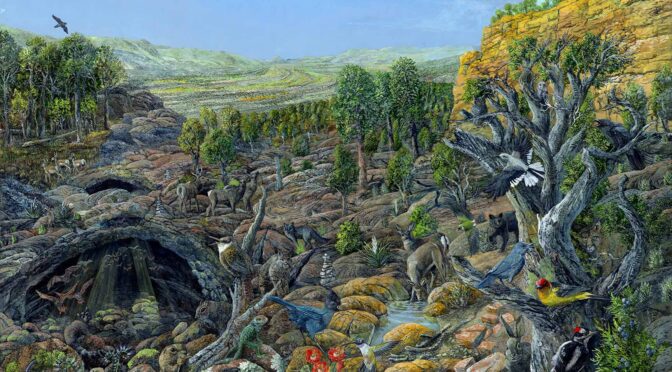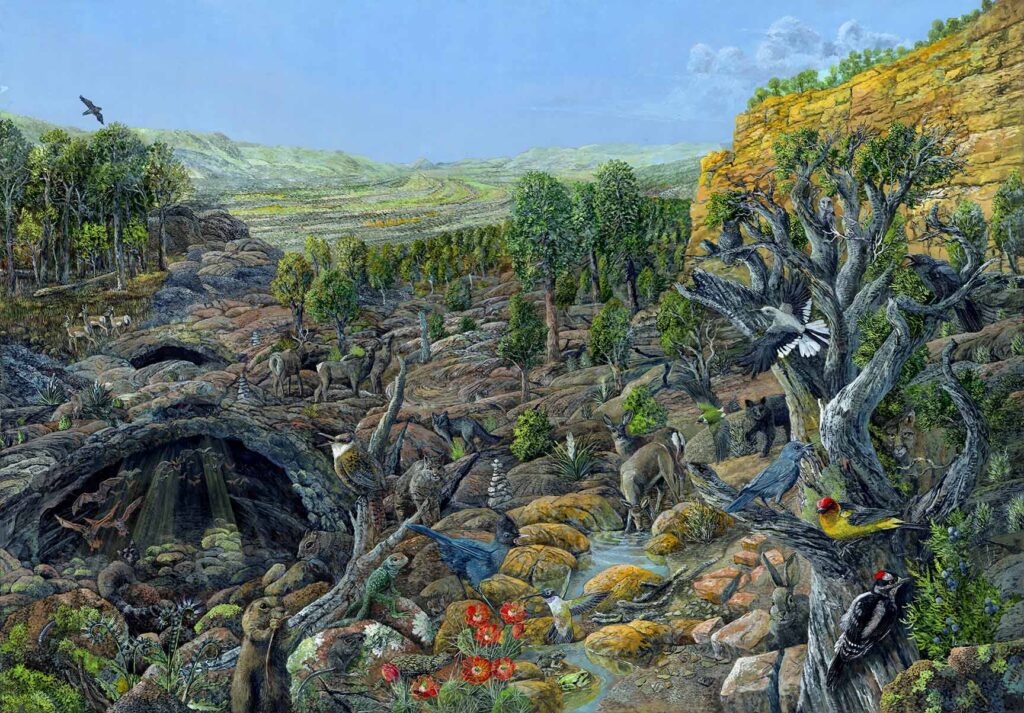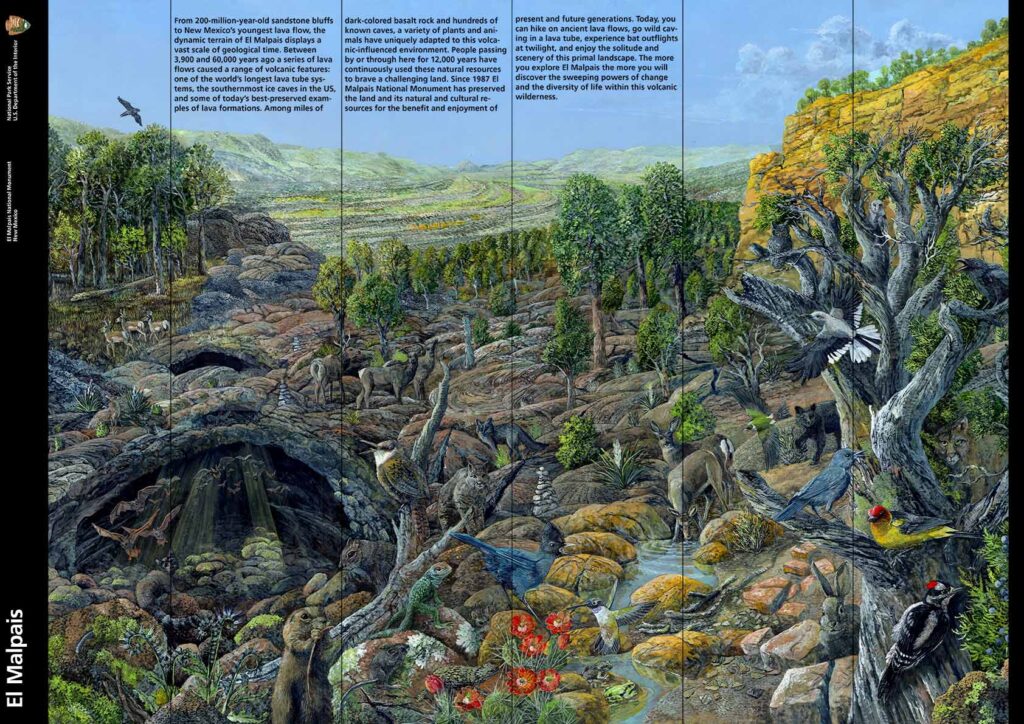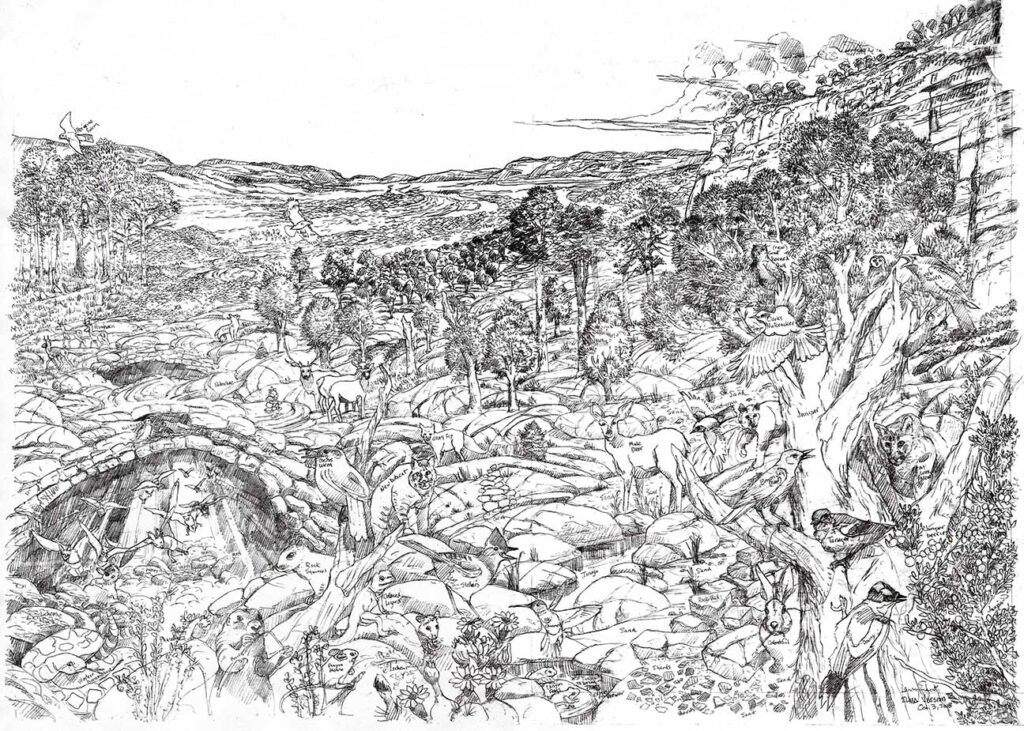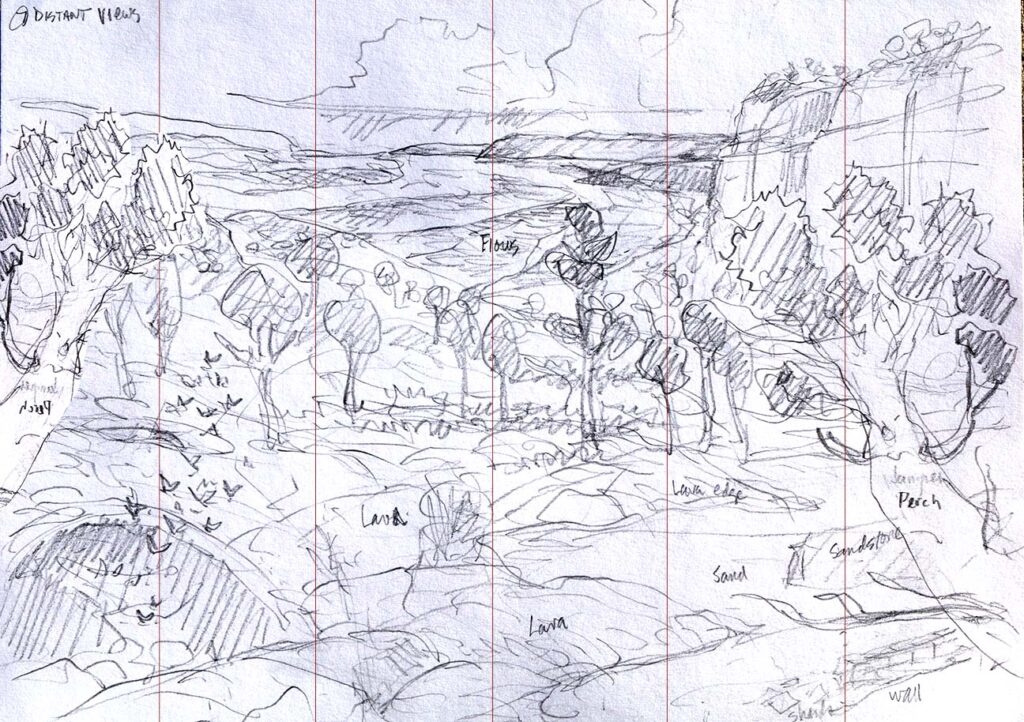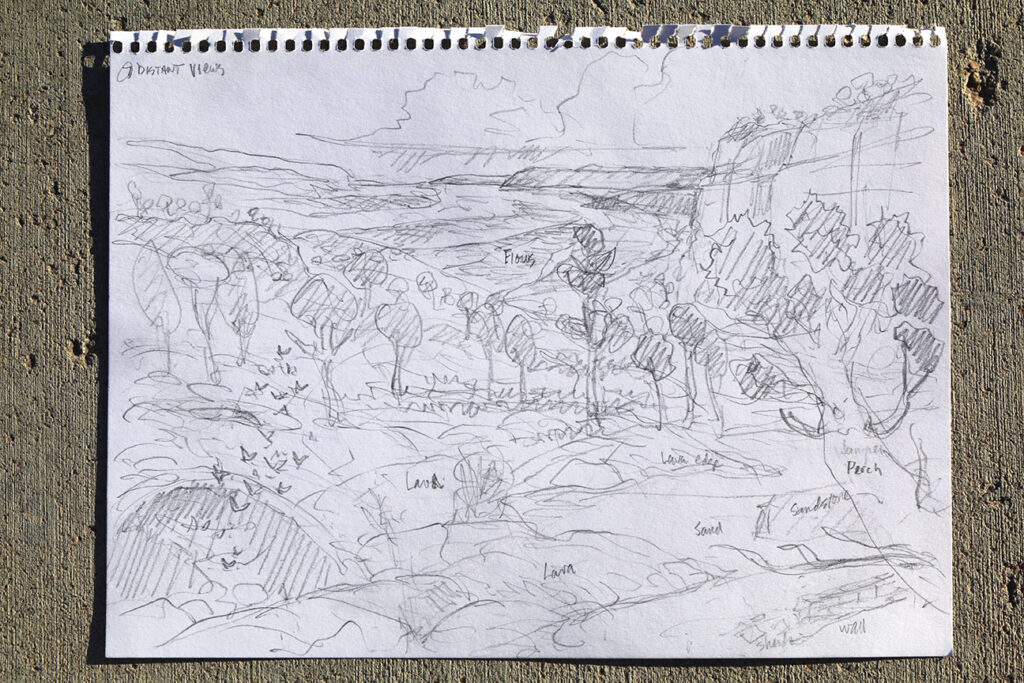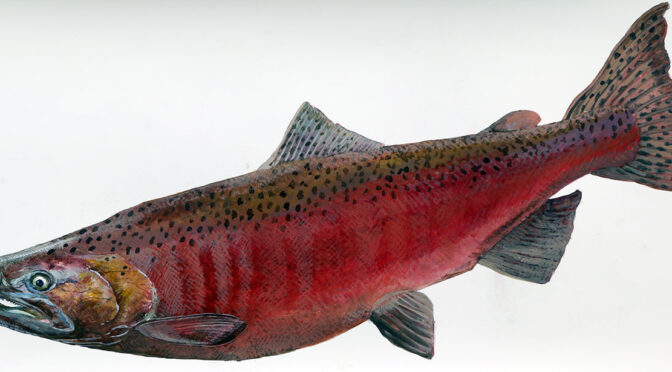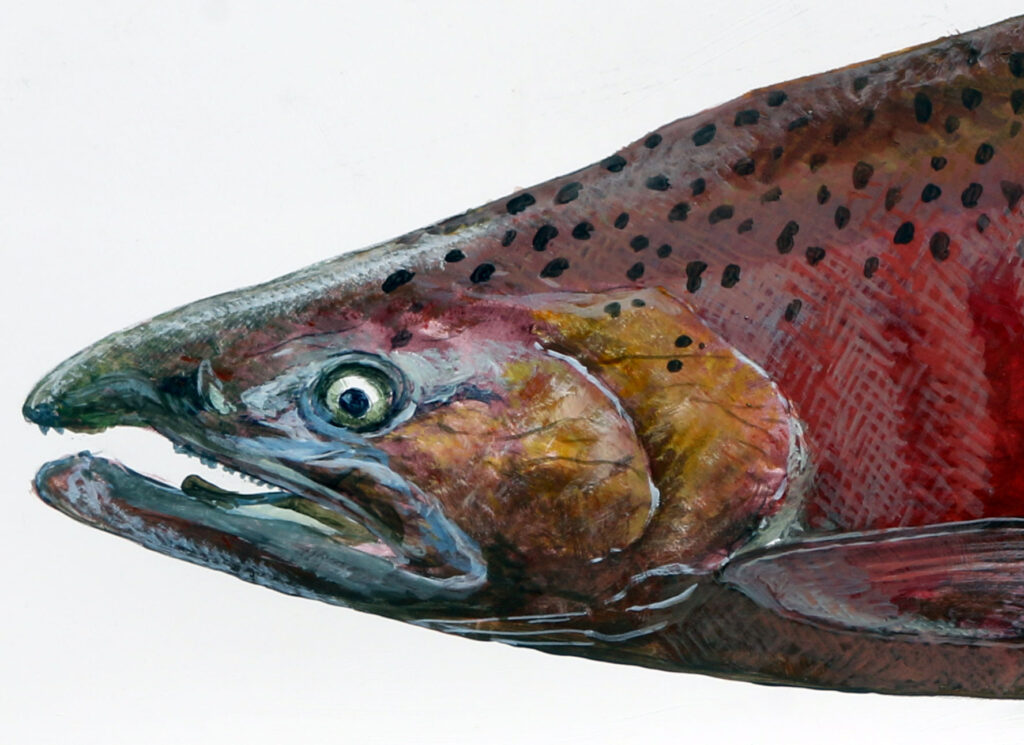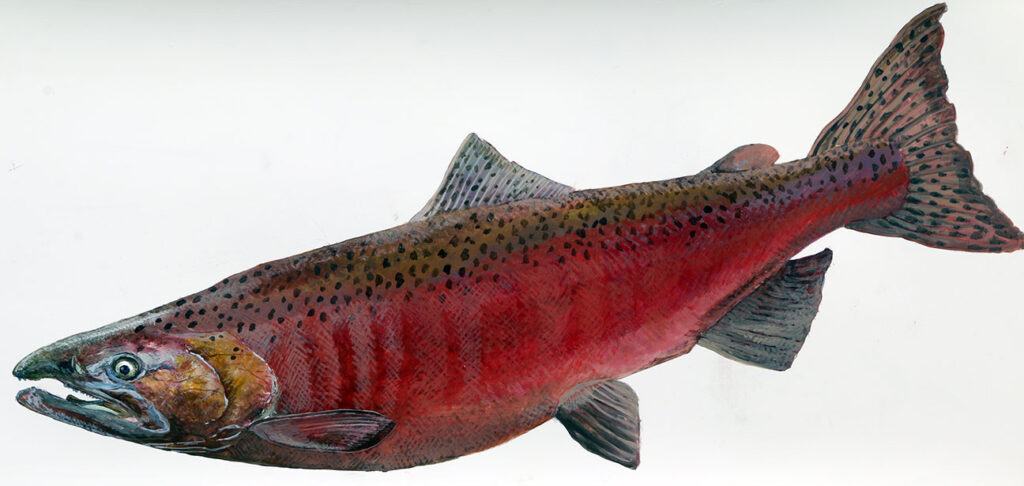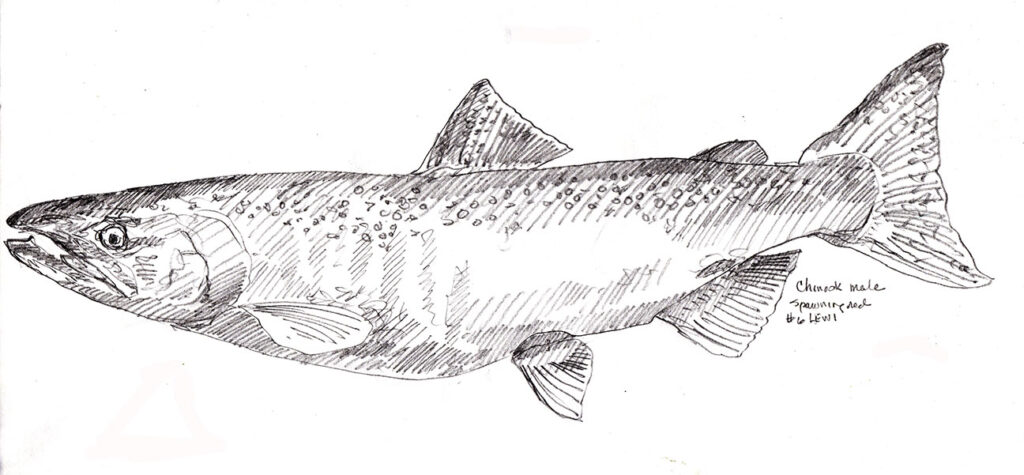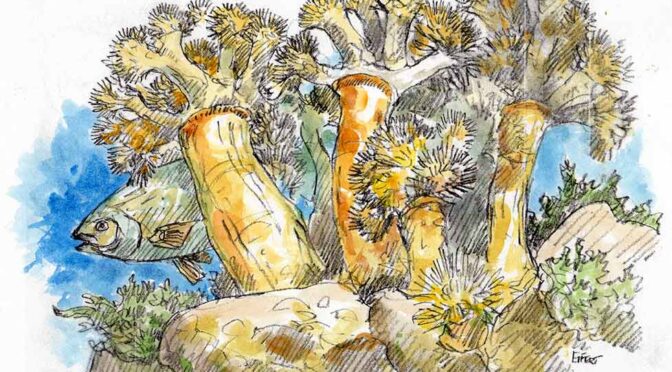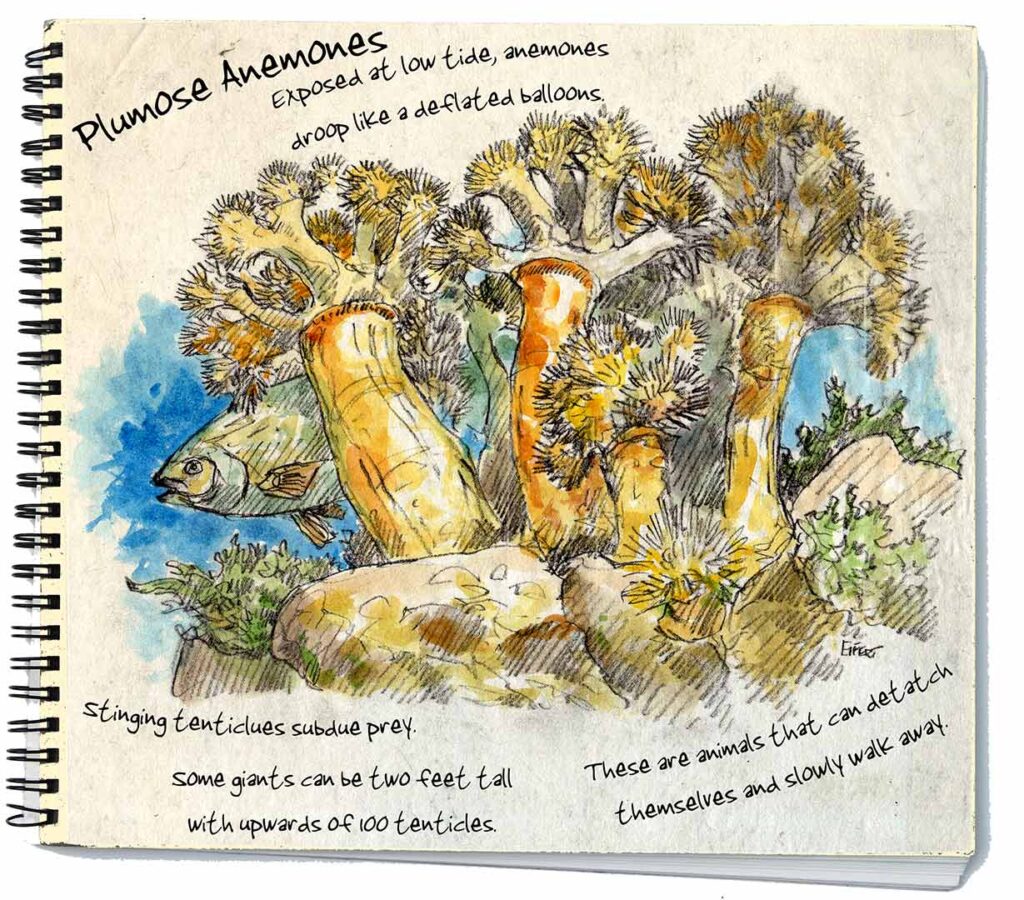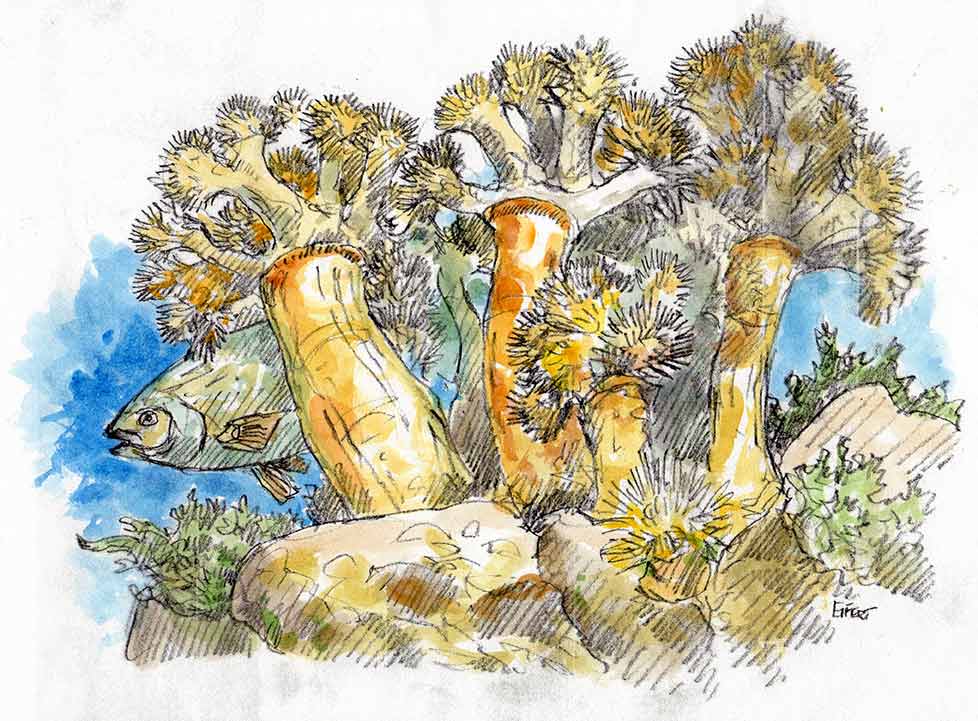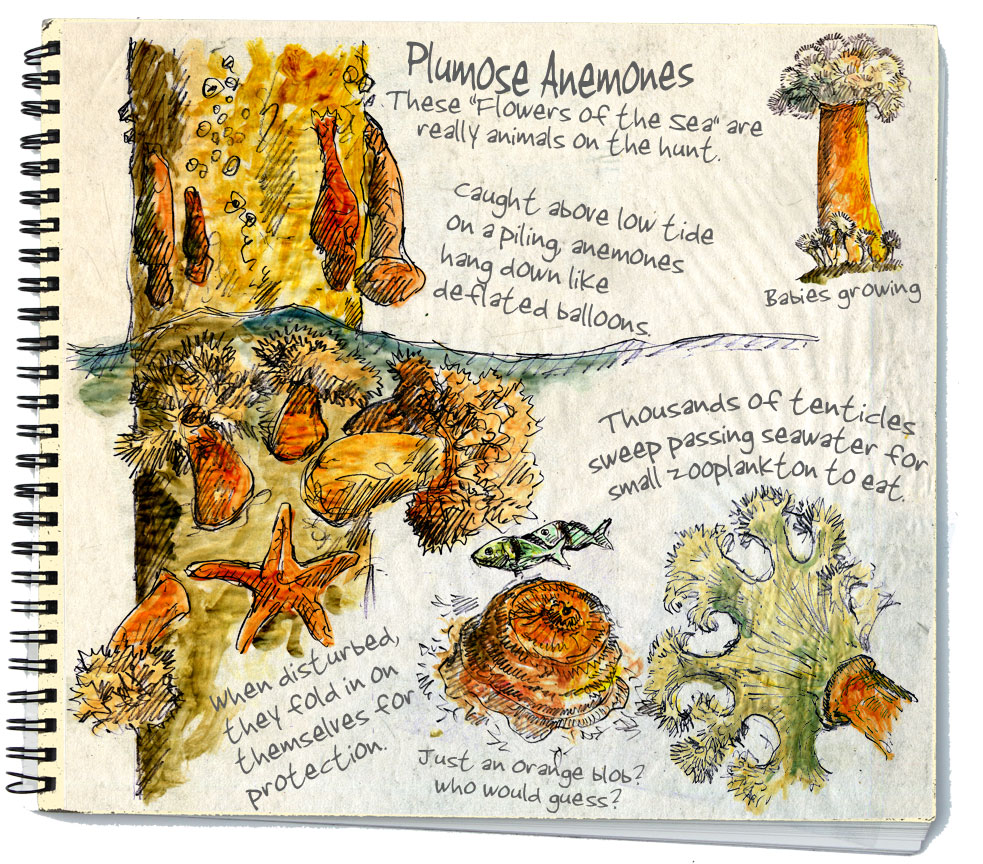I’ve been working on art for Malheur National Wildlife Refuge in eastern Oregon, a continuing effort that’s finally coming together. This wayside panel I just finished is going there, telling the story of springtime water vs. fall desert. It’s been interesting to compare the two scenes – which is a completely fabricated scene. No such place exists, yet it’s at Malheur in many places.
This view is of the spring snowmelt season there, when water from the local mountains fill up this grand valley with ponds and marshes. These lakes are only a couple of feet deep at most, many are less, but the place is crammed with birds either nesting or on their way north. It’s possibly the single most important wildlife refuge in the West.
And this scene shows the same place a few months later. The lakes have dried to an almost desert landscape and the lush foliage of spring has yellowed. It was interesting to figure this out – just the cattails were challenging to understand their life-cycle.
And here is where this and two other waysides are going – Buena Vista Overlook. My new paintings will replace these old and tired ones atop a stunning view of the valley below. These are big panels, each five feet wide. They needed to be big to compete with the scene.
Call this my small effort at using art to fight our current culture of White Terrorists in America. This is the place the Bundy Gang of Thugs took over a few years ago in a Right-wing attack on our heritage. Remember? Yes, this place is OUR heritage – and then the Trump administration pardoned them when they were sentenced for their crimes. Not enough said – but if you want to save what’s left of these places, VOTE for nature!
Thanks for reading this week.
Larry Eifert
Here’s my Facebook fan page. I post lots of other stuff there.
Click here to go to our main website – with jigsaw puzzles, prints, interpretive portfolios and lots of other stuff.
Nancy’s web portfolio of stunning photography and paintings
And here to go to Virginia Eifert’s website.
